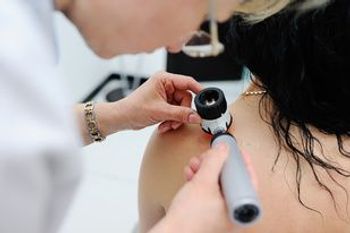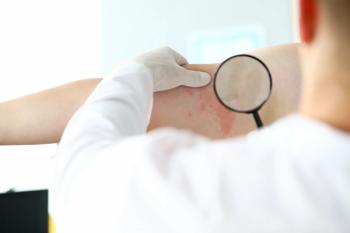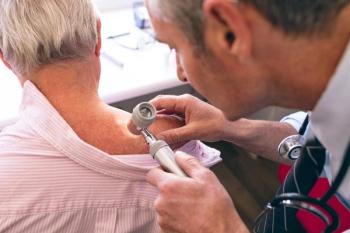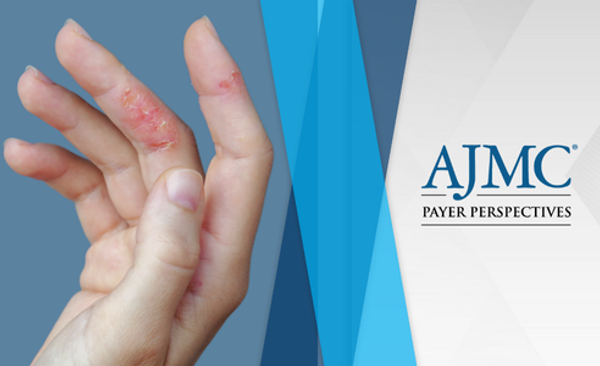
Atopic Dermatitis
Latest News

Latest Videos

CME Content
More News

Robert Sidbury, MD, MPH, chief, Division of Dermatology, Seattle Children's Hospital, provides an overview of recent approvals and indications under consideration for the treatment of pediatric atopic dermatitis.

Pediatric patients with early-onset atopic dermatitis (AD) who reported incidence of food sensitization were associated with later allergic respiratory diseases, in which persistence of AD was linked with multiple food allergies.

Pediatric and adult patients reporting more severe disease courses of atopic dermatitis had a greater risk of select cancers, particularly lymphoma.

Dr Elaine Siegfried Discusses Skin Color, Socioeconomic Implications of Atopic Dermatitis Management
Elaine Siegfried, MD, professor of pediatrics and dermatology, Saint Louis University Health Sciences Center, explains the impact of socioeconomic status on the management of atopic dermatitis in the clinical setting.

Findings of the 52-week phase 3 LIBERTY AD PED-OLE trial showed dupilumab to have an adequate safety profile and incremental clinical benefit with continued use among pediatric patients with moderate to severe atopic dermatitis.

Robert Sidbury, MD, MPH, chief, division of dermatology, Seattle Children's Hospital, discussed the emergence of effective therapies for the management of atopic dermatitis and how dermatologists and other providers involved in patient care can better promote earlier use of these treatments.

Dermatology specialists were cited by diverse caregivers of children with atopic dermatitis (AD) to provide enhanced care delivery and improved AD disease control compared with primary care providers.

Elaine Siegfried, MD, professor of pediatrics and dermatology, Saint Louis University Health Sciences Center, speaks on safety considerations for the use of Janus kinase (JAK) inhibitors in pediatric patients with atopic dermatitis.

Atopic dermatitis was associated with the greatest burden of disease compared with 2 other types of dermatitis, in which high incidence and disability-adjusted life-years rates corresponded with high sociodemographic index areas.

Robert Sidbury, MD, MPH, chief, Division of Dermatology, Seattle Children's Hospital, spoke on the mental health comorbidity risk linked with atopic dermatitis and how dermatologists can play a role in managing behavioral care needs of at-risk patients.

More patients with atopic dermatitis achieved mild disease severity by 1 month of treatment with adjuvant dupilumab and tacrolimus vs dupilumab alone.

Elaine Siegfried, MD, professor of pediatrics and dermatology, Saint Louis University Health Sciences Center, discusses several pediatric patient populations with atopic dermatitis who are candidates for the use of systemic therapies.

Several modifiable lifestyle factors were associated with moderate to severe atopic dermatitis in a patient cohort from the Netherlands, including smoking, alcohol consumption, and stress.

Elaine Siegfried, MD, professor of pediatrics and dermatology, Saint Louis University Health Sciences Center, explains current knowledge on the pathology of atopic dermatitis and use of targeted biologic therapies.

Across 3 disease states, dupilumab has been shown to create rapid, clinically meaningful responses that were sustained, which could improve adherence and the patient-provider relationship.

Robert Sidbury, MD, MPH, Chief, Division of Dermatology, Seattle Children's Hospital, discussed how new guidelines issued by the American Academy of Dermatology (AAD) regarding comorbidity risk in patients with atopic dermatitis will influence the condition's treatment.

Patients with atopic dermatitis who achieved rapid changes in skin pain severity with the Janus kinase inhibitor baricitinib were associated with clinically significant improvement in Dermatology Life Quality Index scores.

Only half of pediatric patients with atopic dermatitis who fit the criteria of having severe disease were identified as such by managing physicians.

Findings of 2 abstracts presented at the 2022 American Academy of Dermatology (AAD) Annual Meeting showed that ruxolitinib cream (Opzelura) demonstrated significant improvement vs vehicle in patients with atopic dermatitis of Black race and across anatomic regions.

Robert Sidbury, MD, MPH, chief, Division of Dermatology, Seattle Children's Hospital, spoke on considerations for dermatologists in seeking payer coverage of novel, expensive therapies for atopic dermatitis.

Sublingual immunotherapy with Dermatophagoides pteronyssinus extract was associated with significant improvements in disease severity among patients with atopic dermatitis sensitized to the house dust mite.

Along with common symptoms of itch and pain, patients with atopic dermatitis experience significant work productivity and attention issues that affect overall quality of life, said Robert Sidbury, MD, MPH, chief, Division of Dermatology, Seattle Children's Hospital.

Longer-term findings of the Measure Up 1 and 2 studies showed the JAK inhibitor upadacitinib to be safe and effective after 52 weeks in the treatment of adults and adolescents with moderate to severe atopic dermatitis.

Administering dupilumab for other atopic conditions, including atopic dermatitis (AD) and asthma, in patients who also have eosinophilic esophagitis (EoE), resulted in improved EoE symptoms.

Dupilumab was shown to significantly improve factors of skin barrier function, including transepidermal water loss, lipid composition, and filaggrin, among patients with moderate to severe atopic dermatitis.

















































